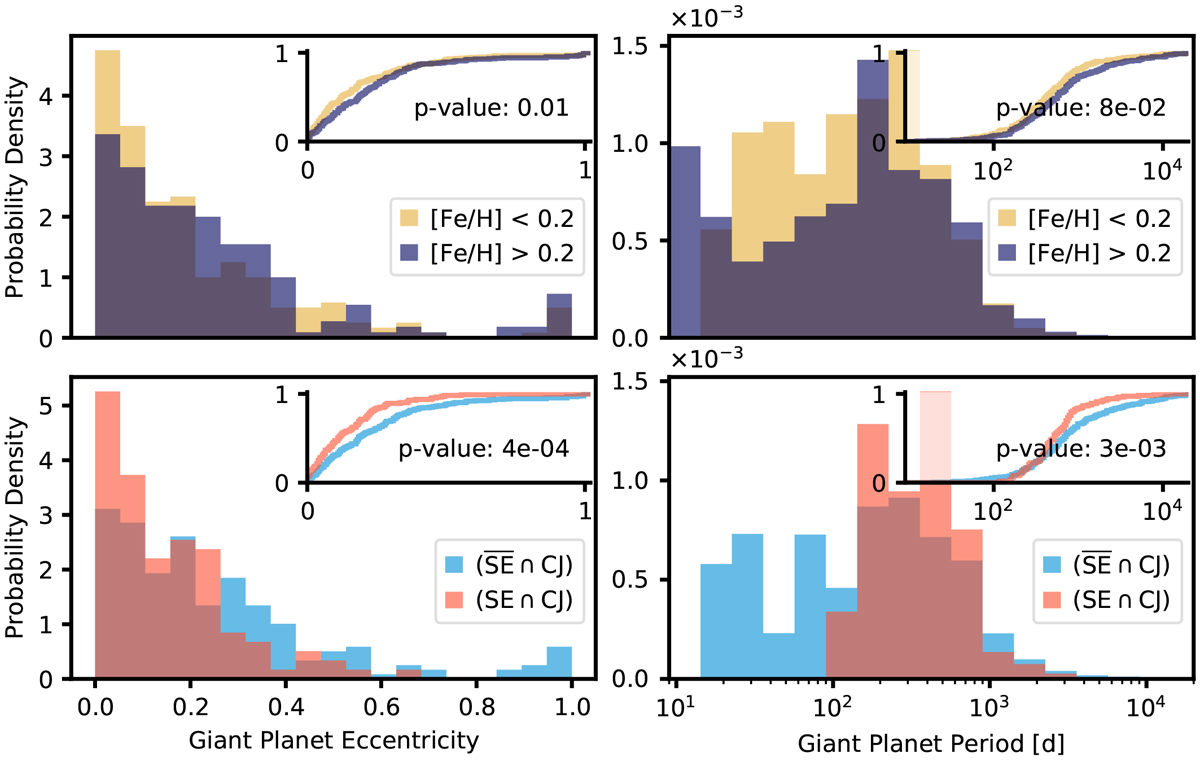Fig. 8

Download original image
Eccentricity and period distributions of all giant planets that ever formed, regardless of their survival. This plot includes all planets with masses from 95 M⊕, not only cold Jupiters. Insets show the corresponding empirical distribution functions. Upper left: eccentricity distribution for giants orbiting low-metallicity ([Fe/H] < 0.2, yellow) and high-metallicity ([Fe/H] > 0.2, blue) host stars. Planets with very low eccentricity are slightly more prevalent in low-metallicity systems. Upper right: period distributions of giant planets for different metallicities. A population of giants with very short periods exists only in the high-metallicity sample (p = 8 × 10−2). Lower left: eccentricity distributions of giant planets in cold Jupiter-hosting systems with and without super-Earth companions. Giants in systems without super-Earths have significantly higher eccentricities (p = 5 × 10−4). No super-Earths occur when a giant with e ≳ 0.7 exists. Lower right: period distributions of giants with and without super-Earths. The latter persist only in systems without short-period giants.
Current usage metrics show cumulative count of Article Views (full-text article views including HTML views, PDF and ePub downloads, according to the available data) and Abstracts Views on Vision4Press platform.
Data correspond to usage on the plateform after 2015. The current usage metrics is available 48-96 hours after online publication and is updated daily on week days.
Initial download of the metrics may take a while.


